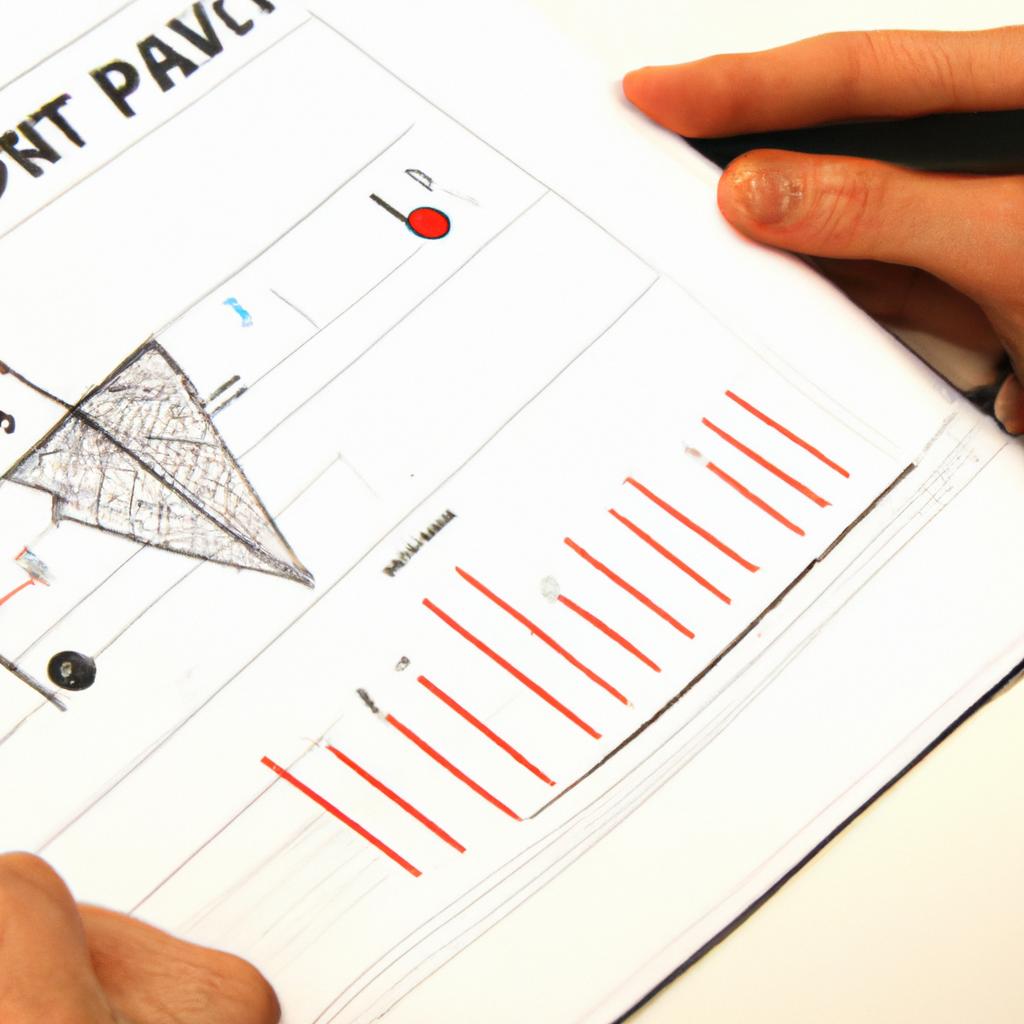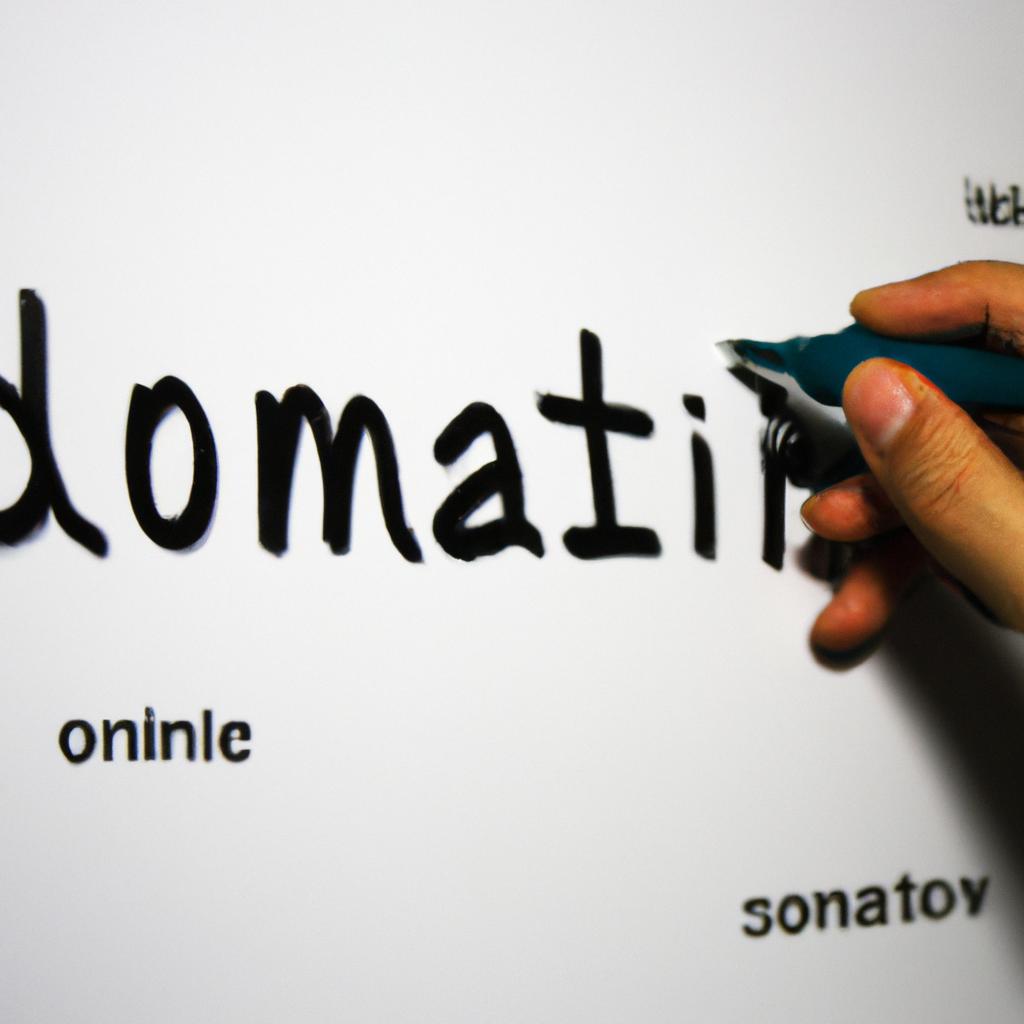Trademark Valuation in Business Appraisal and Services: Intellectual Property Valuation

Trademark valuation is a critical aspect of business appraisal and services, particularly in the realm of intellectual property valuation. The process involves assessing the economic value of a trademark, which can be influenced by factors such as brand recognition, reputation, and market demand for products or services associated with the mark. To illustrate this concept further, consider the case study of Company X, an established multinational corporation operating in the consumer electronics industry. Company X has developed a strong trademark over the years that represents innovation, quality, and reliability to consumers worldwide.
In order to accurately determine the value of Company X’s trademark, various methodologies are employed within the field of intellectual property valuation. These methods include income-based approaches, market-based approaches, and cost-based approaches. Income-based approaches focus on estimating future cash flows generated from the use of the trademark while taking into account factors like growth rates and risk levels. Market-based approaches involve comparing similar trademarks that have been sold or licensed in recent transactions to derive an estimate for Company X’s mark. Lastly, cost-based approaches analyze the expenses incurred to create or replace the trademark as well as any potential revenue losses resulting from its absence.
By understanding these different valuation methods and their application in real-world scenarios like Company X’s case study, businesses can better appreciate the true worth of their trademarks and make informed decisions regarding licensing, selling, or leveraging their intellectual property assets. This understanding allows companies to strategically manage and protect their trademarks, ensuring they are maximizing value and capitalizing on the competitive advantages associated with their brands. Moreover, it enables businesses to effectively negotiate deals, secure financing, and accurately report the value of their trademarks for financial and regulatory purposes. Ultimately, a comprehensive trademark valuation process empowers companies to make sound business decisions that align with their overall strategic objectives and drive long-term success in today’s global marketplace.
Understanding Trademark Valuation
Trademark valuation is a crucial aspect of business appraisal and services, as it provides an assessment of the value associated with a particular trademark. A trademark represents the unique identity of a company or product and plays a significant role in distinguishing it from competitors in the market. To comprehend the intricacies of trademark valuation, let us consider the example of XYZ Corporation, a renowned global brand known for its innovative technological solutions.
One key factor to consider when evaluating trademarks is their distinctiveness. This refers to the degree to which a trademark stands out and is easily identifiable among other brands within its industry. In assessing distinctiveness, evaluators often rely on four primary criteria: (1) arbitrary or fanciful marks that have no connection to the products/services they represent; (2) suggestive marks that subtly allude to qualities or characteristics of the products/services; (3) descriptive marks that directly describe features or attributes of the products/services; and (4) generic terms that refer to common names for goods/services. The more distinctive a mark is, the higher its potential value.
Another critical aspect in trademark valuation is brand recognition and reputation. Brand recognition reflects how well consumers can identify and associate a specific trademark with its respective company or product. It encompasses factors such as consumer loyalty, market share, advertising expenditure, and overall brand visibility. Evaluating these aspects allows appraisers to gauge the strength of a trademark’s association with positive consumer sentiment and assess its impact on customer preferences and purchasing decisions.
In addition to distinctiveness and brand recognition, legal protection also influences trademark valuation. Intellectual property rights provide legal safeguards against unauthorized use or infringement by others. Trademarks registered under relevant laws enjoy exclusive ownership rights, enabling companies to control their usage in commerce effectively. Such legal protections enhance a trademark’s value by deterring potential infringers and safeguarding against dilution or misappropriation.
Considering these factors collectively enables stakeholders involved in business appraisal and services to gain a comprehensive understanding of trademark valuation. In the subsequent section, we will explore the various factors that can affect the value of trademarks in greater detail, shedding light on the complexities involved in this process.
Factors Affecting Trademark Value
Understanding Trademark Valuation Factors
In the previous section, we explored the concept of trademark valuation and its significance in business appraisal. Now, let us delve deeper into the factors that can impact the value of a trademark.
To illustrate these factors, consider the case study of Company XYZ, a well-known multinational corporation with a strong brand presence. The company’s trademark is widely recognized and associated with high-quality products. However, due to recent negative publicity surrounding one of their product lines, consumers’ perception of the brand has been negatively affected. As a result, Company XYZ’s trademark value may have diminished.
Several key elements determine the value of a trademark:
- Brand Reputation: A positive reputation enhances the value of a trademark by increasing consumer trust and loyalty. Conversely, negative associations or controversies can significantly diminish its worth.
- Market Demand: The demand for goods or services offered under a particular trademark plays a crucial role in determining its value. If a brand enjoys substantial market share and customer preference, it will likely command higher valuation.
- Legal Protection: Strong legal protection through trademarks registration and enforcement provides exclusivity and prevents unauthorized use by competitors. Robust legal safeguards enhance brand equity and contribute positively to valuation.
- Competitive Landscape: Assessing industry competition is essential when valuing trademarks. Factors such as market saturation, substitute products, and competitive pricing strategies influence how customers perceive different brands within an industry.
Consider this markdown bullet point list showcasing some emotional responses related to these factors:
- Positive brand reputation fosters trust and loyalty among consumers.
- High market demand signifies popularity and desirability of products/services.
- Strong legal protection ensures uniqueness and exclusivity.
- Intense competition challenges brand differentiation and affects perceived value.
Now let’s visualize these factors using the following markdown table:
| Factors | Emotional Response |
|---|---|
| Brand Reputation | Trustworthy & Reliable |
| Market Demand | Popular & Desirable |
| Legal Protection | Exclusive & Unique |
| Competitive Landscape | Challenging & Dynamic |
In summary, trademark valuation is influenced by various factors such as brand reputation, market demand, legal protection, and the competitive landscape. These elements interact with each other to shape consumers’ perceptions of a particular brand. Understanding these factors is crucial for accurately assessing the value of trademarks in business appraisal.
Transitioning into the subsequent section about “Methods for Trademark Valuation,” we will now explore the methodologies employed to determine trademark worth.
Methods for Trademark Valuation
In the previous section, we discussed the various factors that can influence the value of a trademark. Now, let’s delve deeper into these factors and explore their impact on trademark valuation.
One example that illustrates the significance of these factors is the case of Company X, a well-known consumer goods company with multiple brands under its umbrella. One of their trademarks, Brand A, holds immense value due to its strong brand recognition and positive reputation in the market. This trademark has become synonymous with quality and trust among consumers, giving it a competitive edge over other similar products. As a result, Brand A commands higher prices and enjoys greater customer loyalty compared to its competitors’ offerings.
- Market demand: The level of demand for products or services associated with a particular trademark plays a crucial role in determining its value. Higher demand leads to increased sales and revenue potential.
- Brand recognition: The extent to which a trademark is recognized by consumers influences its perceived value. Strong brand recognition fosters consumer trust and loyalty.
- Industry trends: Changes in industry dynamics can impact the relevance and desirability of certain trademarks. Staying aligned with current trends ensures sustained value.
- Intellectual property protection: Adequate legal protection safeguards against infringement and counterfeiting, preserving exclusivity and enhancing brand value.
Now, let’s take a closer look at these factors through an illustrative table:
| Factors | Impact on Trademark Value |
|---|---|
| Market Demand | Positive |
| Brand Recognition | Positive |
| Industry Trends | Variable |
| IP Protection | Positive |
By analyzing these aspects systematically, businesses can gain valuable insights into how each factor contributes to the overall valuation of their trademarks.
Moving forward into our next section about “Methods for Trademark Valuation,” understanding these factors is crucial, as they form the foundation for effective valuation strategies. By recognizing their significance and leveraging them strategically, businesses can maximize the value of their trademarks in an increasingly competitive marketplace.
Importance of Trademark Valuation in Business
The process of valuing trademarks is crucial in determining the worth and potential of intellectual property assets. Various methods have been developed to assess the value of a trademark, taking into account factors such as brand recognition, market competition, and economic conditions.
One commonly used method is the Market Approach, which estimates the value of a trademark by comparing it to similar trademarks that have been sold or licensed in the marketplace. This approach relies on analyzing transactions involving comparable brands and assessing their financial terms to determine an appropriate valuation range. For instance, consider a case where two companies operating in the same industry with comparable trademarks enter into licensing agreements; evaluating these agreements can provide insights into potential values for other trademarks within this sector.
Another popular approach is the Cost Approach, which determines the value of a trademark based on its reproduction cost or replacement cost. This method assumes that a company would need to invest a certain amount to recreate or replace an existing trademark’s benefits. By considering factors like research and development costs, marketing expenses, and legal fees required to establish a new brand identity equivalent to an existing one, this approach provides an estimate for the trademark’s value.
Moreover, income-based approaches are frequently utilized when valuing trademarks. These methods focus on estimating future revenues generated from the use of the trademark and discounting them back to present value. One example is the Relief from Royalty Methodology which calculates the royalty payments that would be avoided if ownership rights were established instead of licensing arrangements. By quantifying this hypothetical scenario over time, analysts can derive an estimation of the trademark’s worth.
To illustrate how various methods can be applied effectively in practice:
- The Market Approach allows businesses to benchmark their trademarks against similar ones in competitive markets.
- The Cost Approach helps organizations understand both tangible and intangible investments necessary for creating brand equity.
- Income-based approaches enable firms not only to forecast future earnings but also identify opportunities for growth through trademark licensing or ownership.
The table below summarizes these methods and their key characteristics:
| Method | Approach | Key Characteristics |
|---|---|---|
| Market Approach | Comparative | Relies on analyzing transactions of similar trademarks |
| Cost Approach | Reproduction | Determines value based on the cost to recreate a brand |
| Income-based Approaches | Future Earnings | Estimates future revenue potential from using the trademark |
Moving forward, we will explore the importance of trademark valuation in business, shedding light on its impact on decision-making processes, financial reporting, and overall organizational strategies. Understanding the significance of valuing trademarks is crucial for businesses seeking to maximize the value of their intellectual property assets and make informed decisions regarding brand management and expansion.
In the subsequent section discussing “Challenges in Trademark Valuation”, we will delve into various obstacles faced by analysts when assessing the worth of trademarks, exploring factors such as market volatility, legal complexities, subjective assessments, and evolving consumer preferences that can influence valuation outcomes.
Challenges in Trademark Valuation
Trademark valuation plays a crucial role in determining the overall value and success of a business. By assigning a monetary value to intangible assets such as trademarks, businesses can make informed decisions regarding investment opportunities, licensing agreements, mergers and acquisitions, and financial reporting. To illustrate the significance of trademark valuation, let us consider the case study of Company X.
Company X is an established technology company known for its innovative products and strong brand presence. As part of their expansion plans, they are considering acquiring another company in a related industry. Before proceeding with the acquisition, it becomes essential for Company X to assess the value of the target company’s trademarks. This evaluation will provide insights into the potential benefits and risks associated with integrating these trademarks into Company X’s existing portfolio.
When conducting trademark valuations, businesses face several challenges that must be overcome to ensure accurate assessments. Firstly, establishing a reliable benchmark for comparison can be difficult due to limited available data on similar transactions or market values. Additionally, estimating future cash flows generated by trademarks requires making assumptions about consumer behavior and competitive dynamics.
To address these challenges effectively, businesses should follow certain best practices when performing trademark valuations:
- Engage experienced professionals: Seeking assistance from qualified experts who specialize in intellectual property valuation ensures thorough analysis and reduces the risk of inaccuracies.
- Consider multiple methods: Utilizing various valuation approaches (such as cost approach, market approach, and income approach) provides a more comprehensive understanding of the trademark’s worth.
- Account for legal considerations: Taking into account any legal restrictions or limitations on trademark usage helps determine their enforceability and mitigates risks associated with infringement claims.
- Regularly reassess valuations: Given that market conditions change over time, periodic reevaluations enable companies to stay updated on their trademark’s changing value.
By adhering to these best practices during trademark valuation exercises, businesses can better navigate through complexities while maximizing the value of their intellectual property assets. In our subsequent section, we will explore the various steps involved in conducting a comprehensive trademark valuation.
Best Practices for Trademark Valuation
Section Title: Challenges in Trademark Valuation
Having understood the importance of trademark valuation, it is crucial to acknowledge that there are several challenges associated with this process. Successfully valuing trademarks requires careful consideration of various factors and potential obstacles. This section will explore some common challenges faced during trademark valuation.
One challenge encountered in trademark valuation is determining the financial value of intangible assets. Unlike tangible assets, such as machinery or property, trademarks do not have a fixed market price. Their value relies heavily on subjective perceptions and brand reputation within specific industries or consumer markets. For instance, consider a well-known technology company that holds multiple trademarks for its products. Although these trademarks contribute significantly to their brand recognition and customer loyalty, quantifying their precise monetary worth can be complex due to the absence of an established market value.
Another obstacle in trademark valuation lies in assessing future cash flows accurately. Estimating the revenue generated by a particular trademark over time demands thorough analysis of relevant economic and industry trends as well as consumer behavior patterns. A hypothetical case study involving a global luxury fashion brand may illustrate this challenge further. The valuation analyst must anticipate changes in consumer preferences, competitive landscapes, and overall market conditions to project future cash flows accurately attributable to the brand’s trademarks.
Moreover, establishing comparability between different trademarks poses yet another hurdle. Each trademark possesses unique characteristics influenced by variables like product differentiation, target audience appeal, geographic scope, and legal protection status. To demonstrate this point more effectively:
- Trademark A has broad international recognition with strong legal protections.
- Trademark B operates primarily within a niche market but enjoys high customer loyalty.
- Trademark C targets a specific demographic group but faces increased competition from similar brands.
- Trademark D struggles with weak legal protection but benefits from an extensive distribution network.
Overcoming these challenges necessitates employing best practices specifically tailored for effective trademark valuation methodologies; however, these practices will be discussed in the subsequent section.
| Trademark | Recognition | Legal Protection | Market Reach |
|---|---|---|---|
| A | High | Strong | International |
| B | Moderate | Moderate | Niche |
| C | Low | Weak | Specific Demographic |
| D | Moderate | Weak | Extensive Distribution |
In conclusion, trademark valuation is a complex process due to various challenges encountered along the way. These challenges include determining intangible asset value, accurately estimating future cash flows, and establishing comparability between trademarks. Overcoming such hurdles requires employing methodologies tailored for effective trademark valuation. The following section will delve into best practices that can assist practitioners in conducting comprehensive and reliable trademark valuations.






